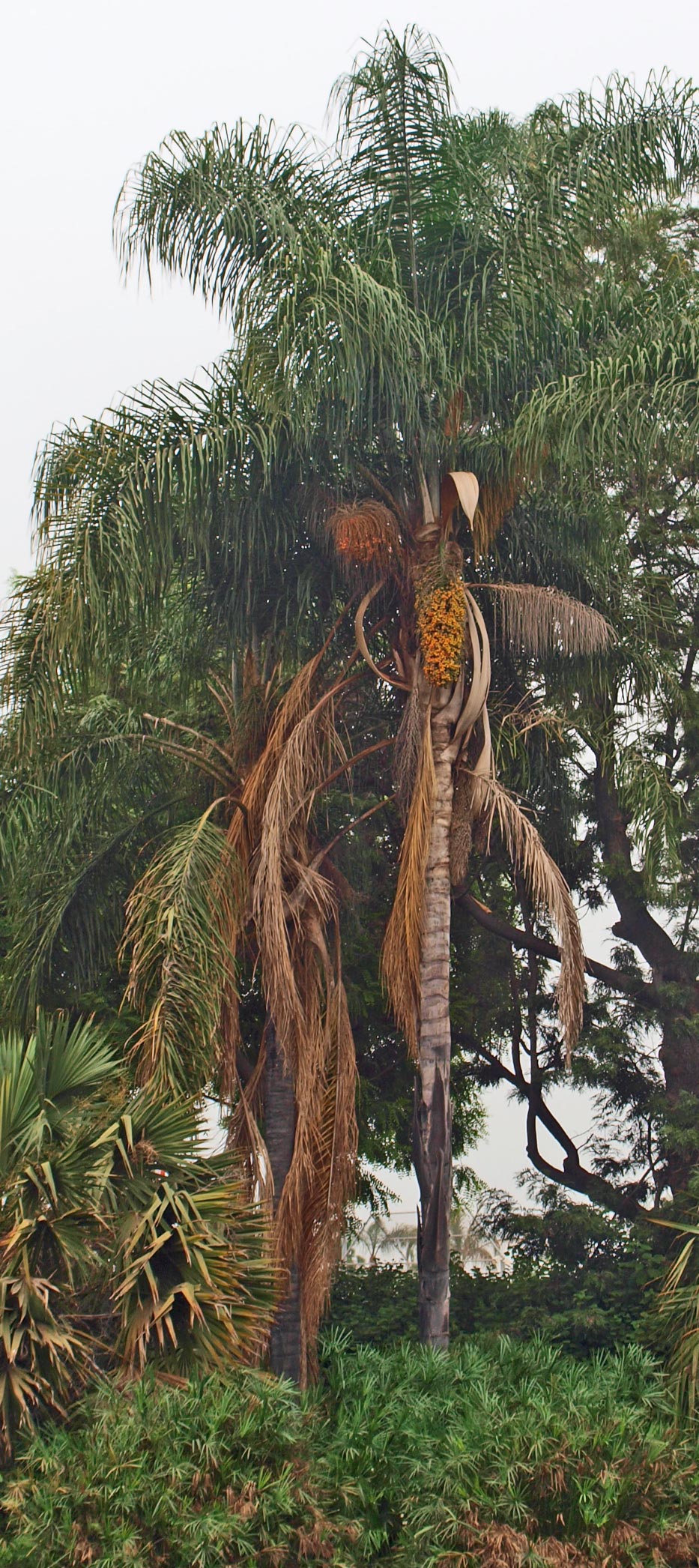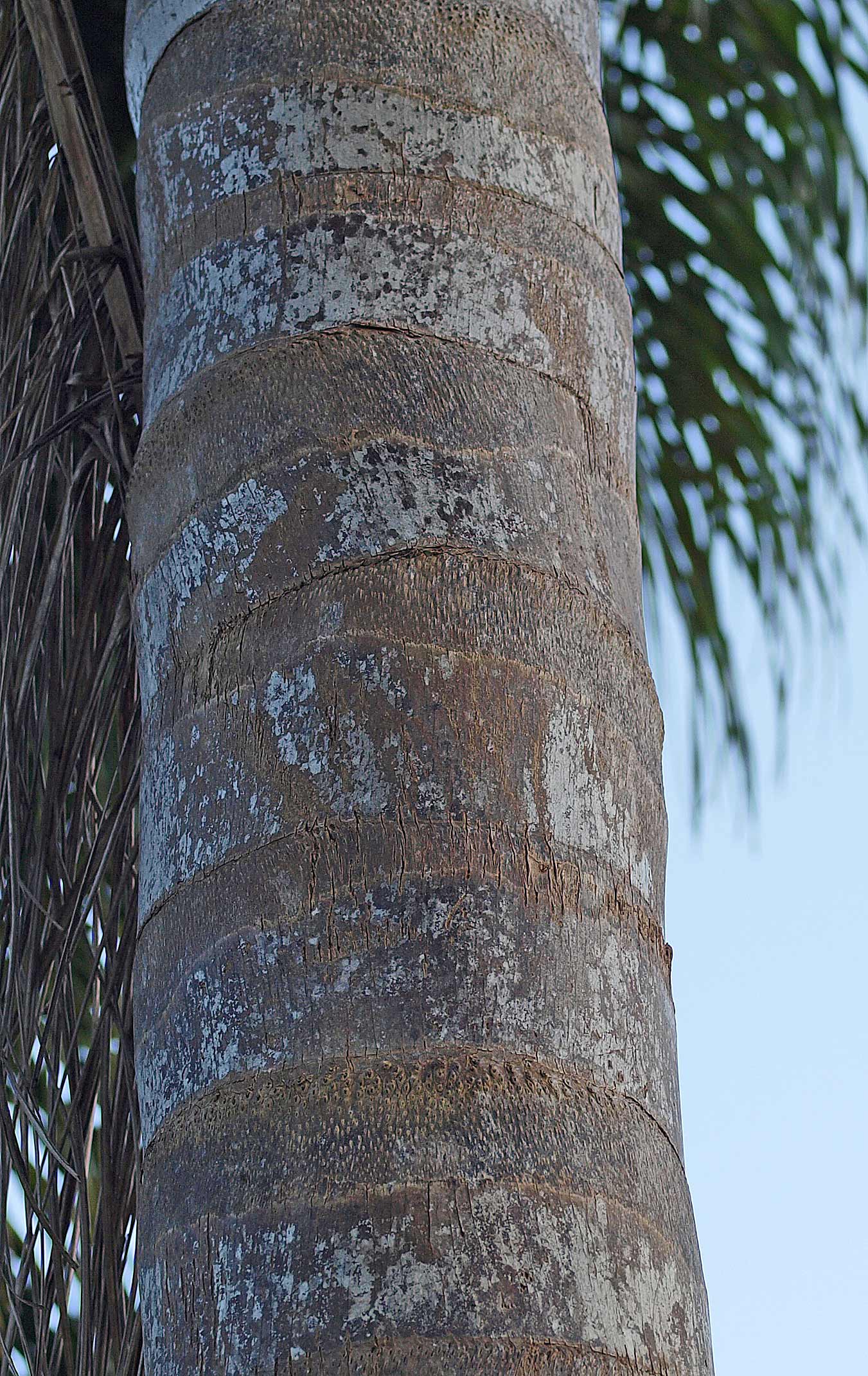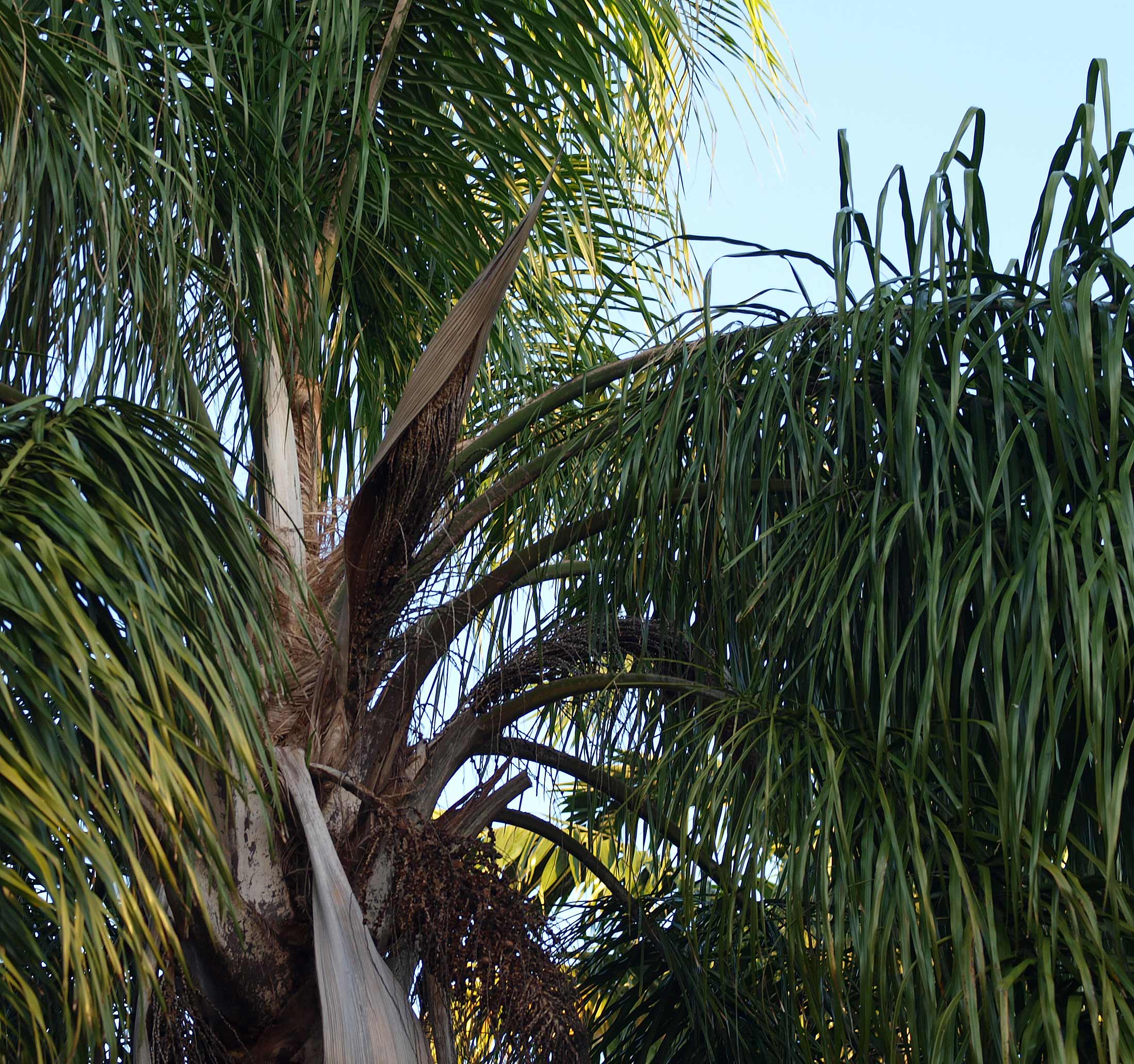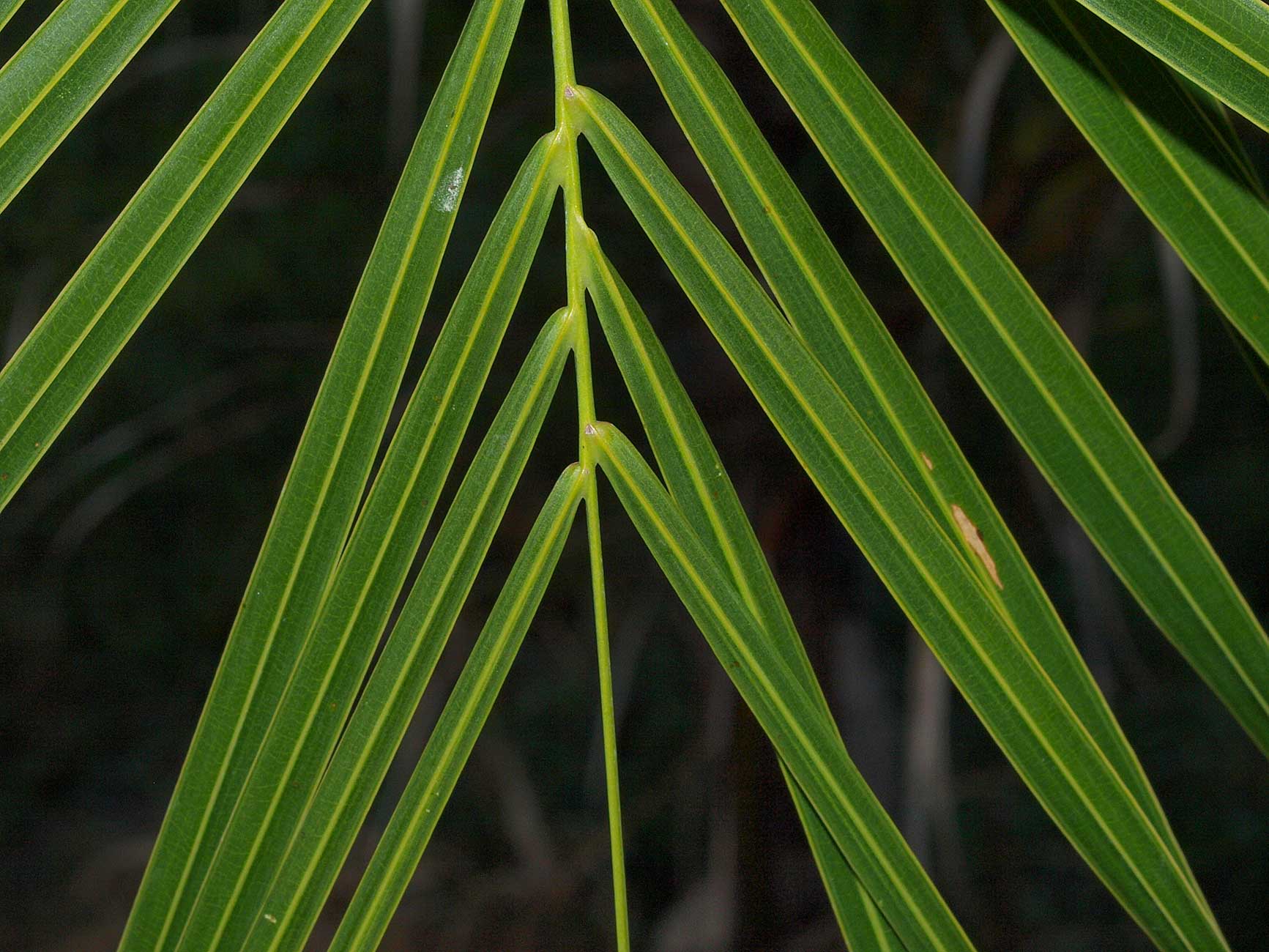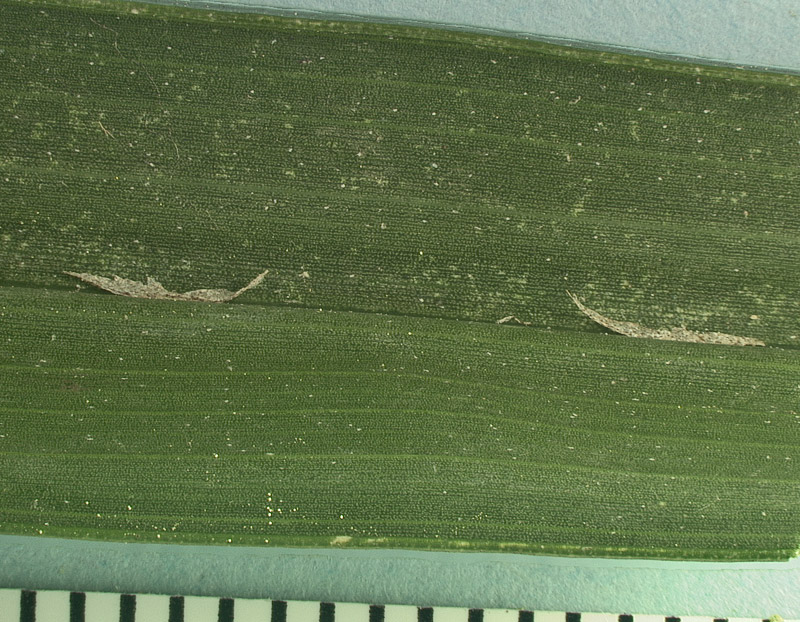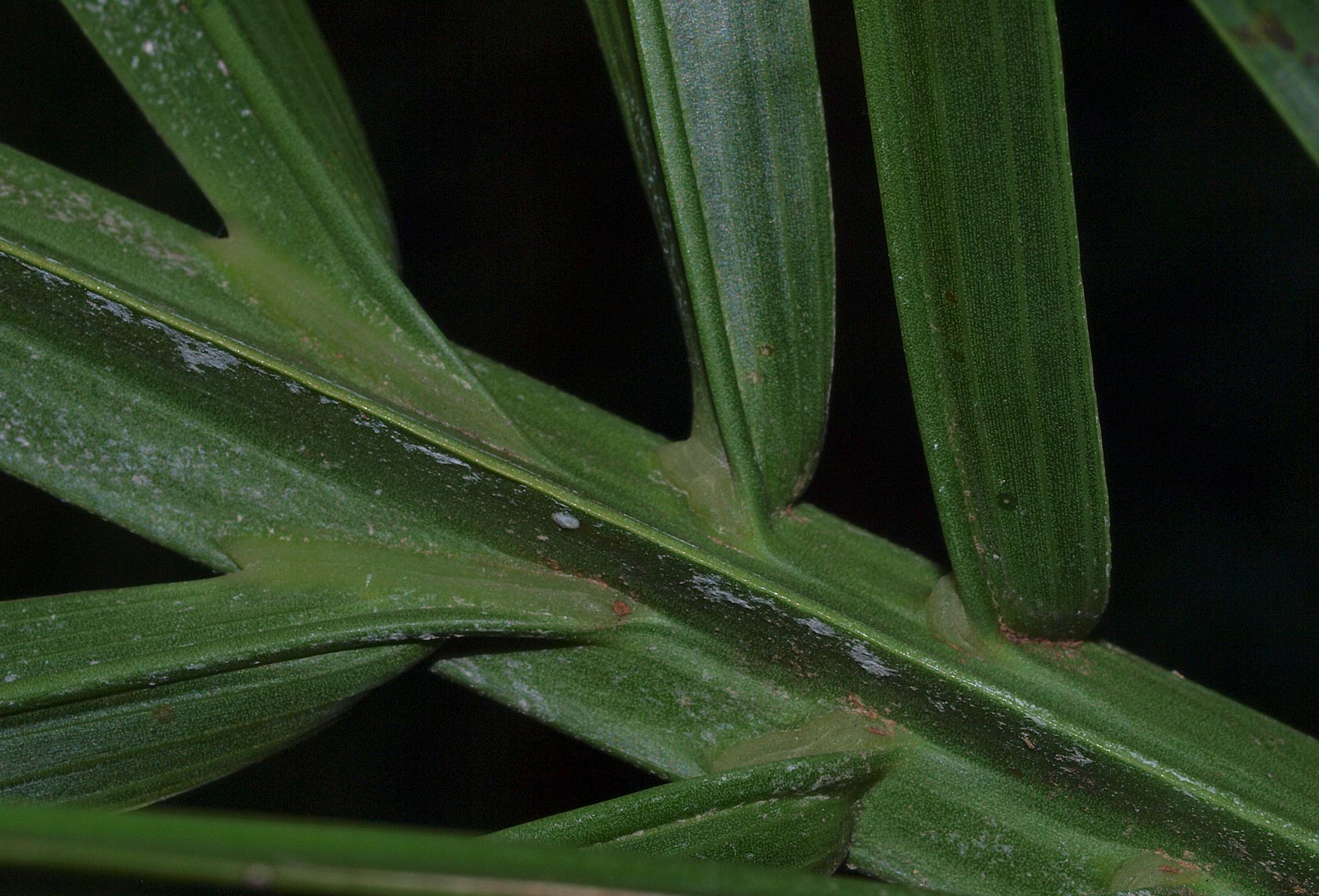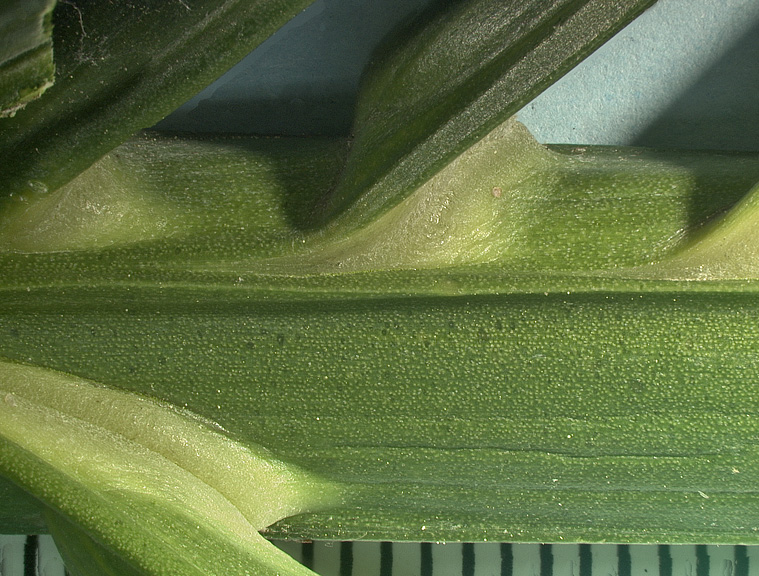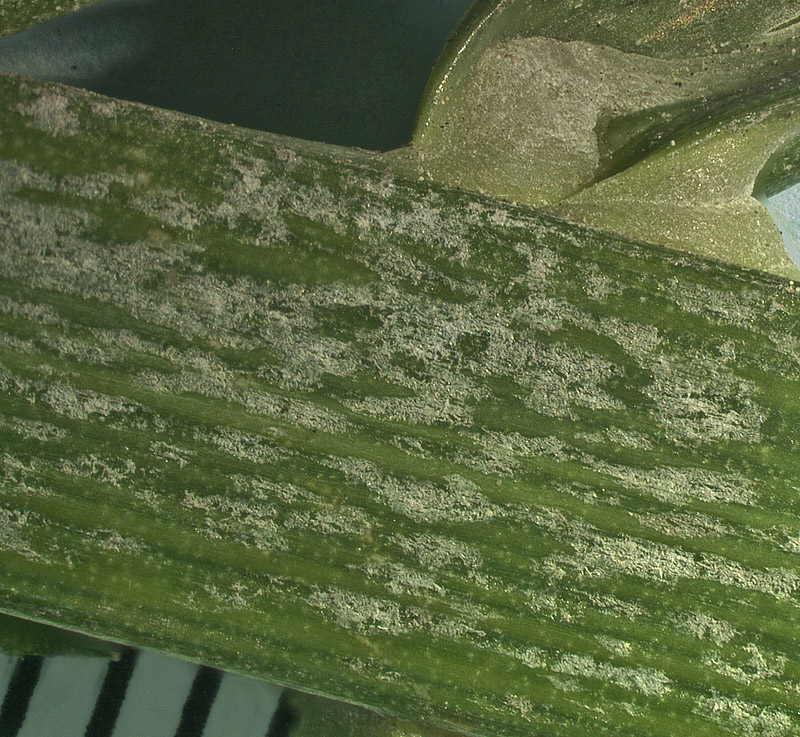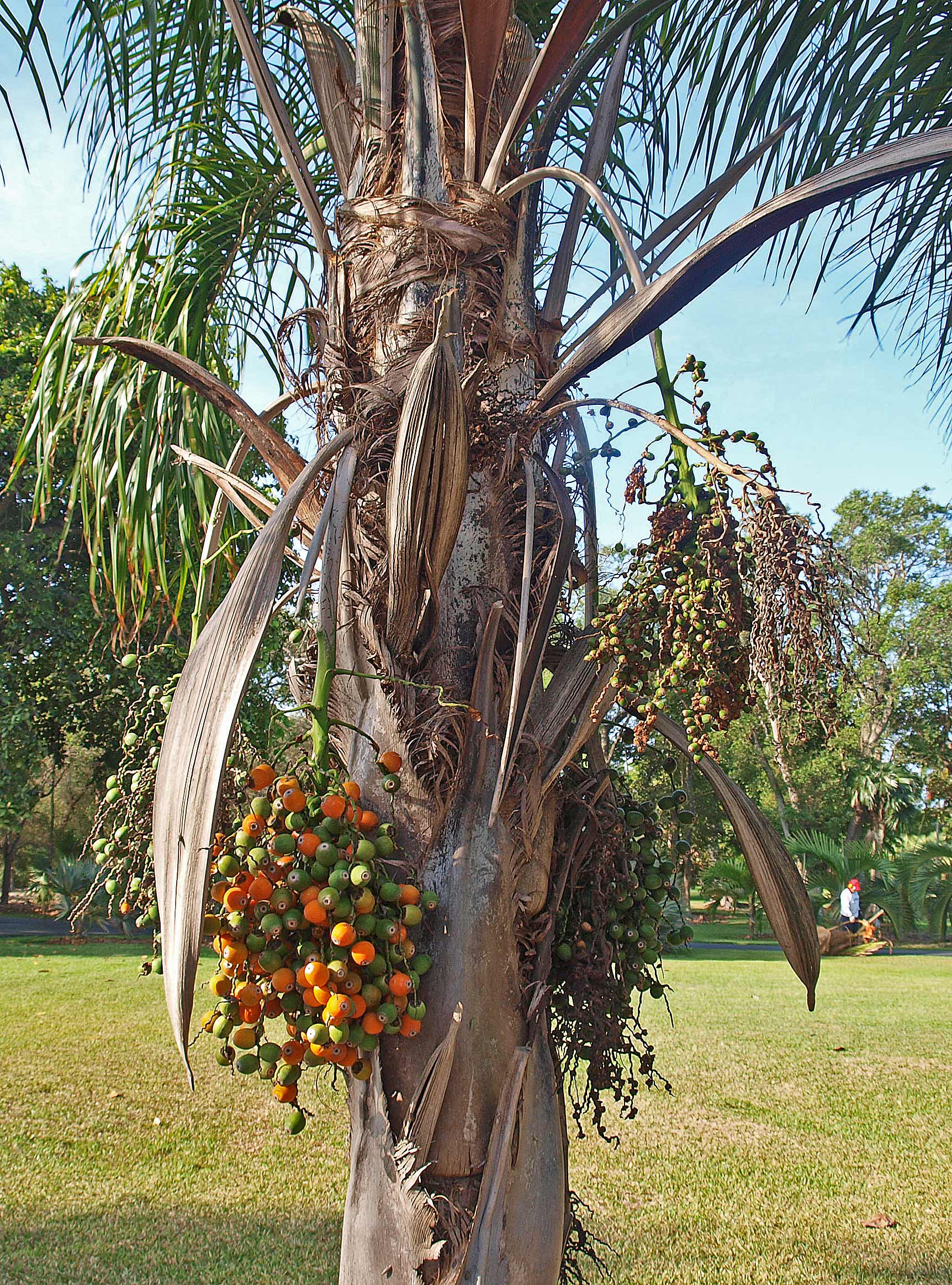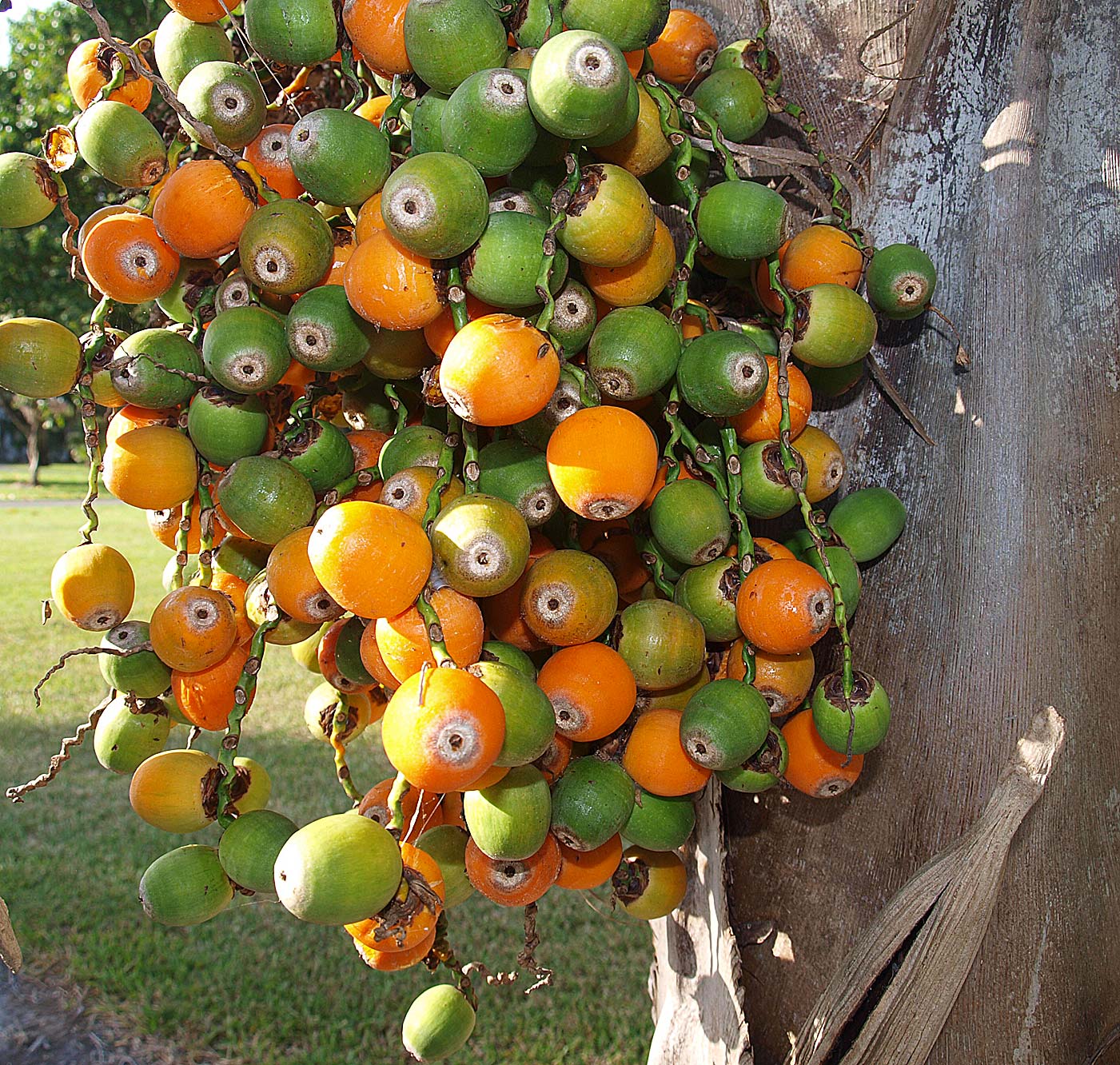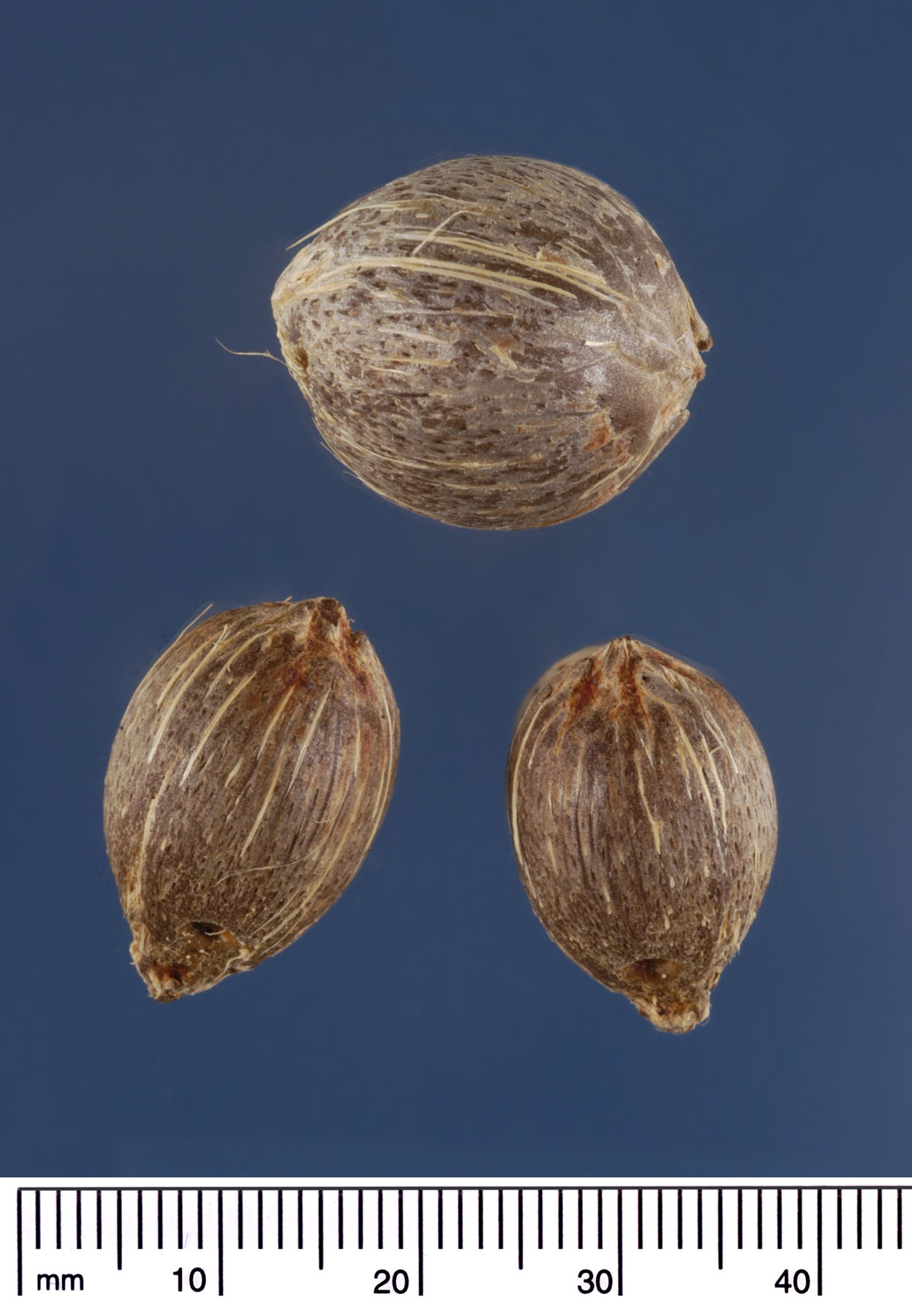Syagrus romanzoffiana
|
Syagrus romanzoffiana habit |
|
Syagrus romanzoffiana stem with leaf scars |
|
Syagrus romanzoffiana canopy |
|
Syagrus romanzoffiana leaflets |
|
Syagrus romanzoffiana ramenta on abaxial leaf midrib |
|
Syagrus romanzoffiana segment of leaf rachis (adaxial) |
|
Syagrus romanzoffiana closer view if segment of leaf rachis (adaxial) and leaflet attachment (mm scale) |
|
Syagrus romanzoffiana segment of leaf rachis (abaxial) |
|
Syagrus romanzoffiana closer view of tomentum on leaf rachis (abaxial) |
|
Syagrus romanzoffiana woody bracts and fruit |
|
Syagrus romanzoffiana fruit |
|
Syagrus romanzoffiana seeds. Photograph courtesy of Mariana P. Beckman, DPI |
Common name
queen palm
Description
Stem: Solitary, gray, smooth with widely spaced leafleaf:
in palms -- the leaf blade (which is usually divided into leaflets or leaf segments), the petiole (or leaf stalk) and the sheath (which forms the attachment of the leaf to the stem)
scars, to 15 m tall and 15 - 45 cm in diameter, often swollen at variable points. Leaves: Pinnatepinnate:
like a feather; palms with pinnate leaves usually have compound leaflets attached to a rachis, although a pinnate leaf may be entire with pinnate veins (e.g., <em>Chamaedorea metallica</em>)
, reduplicatereduplicate:
Most palm leaflets or leaf segments are obviously folded. If the folds create an upside-down V-shape, with the margins lower than the midrib (so that rain might "run off the roof"), the folding is reduplicate.
, to 5 m long, with an arching rachisrachis:
an extension of the petiole through the blade of a pinnate leaf to which leaflets are attached
, usually dark green, but somewhat variable in color. Leaflets spead in several planes, irregularly spaced along the rachisrachis:
an extension of the petiole through the blade of a pinnate leaf to which leaflets are attached
in groups of two to seven, with drooping leaftips. Flowers and fruit: Inflorescence inflorescence:
the reproductive structure of a flowering plant, including palms, consisting of flowers and associated bracts
to 1-2.5 m long, surrounded by a woody spathe. Separate male and female white flowers are borne on a single inflorescenceinflorescence:
the reproductive structure of a flowering plant, including palms, consisting of flowers and associated bracts
. Fruits oblong to globose, yellow to orange, 2-3 cm long.
Diagnostic features
Solitary palm with smooth gray stem, widely spaced leafleaf:
in palms -- the leaf blade (which is usually divided into leaflets or leaf segments), the petiole (or leaf stalk) and the sheath (which forms the attachment of the leaf to the stem)
scars, pinnatepinnate:
like a feather; palms with pinnate leaves usually have compound leaflets attached to a rachis, although a pinnate leaf may be entire with pinnate veins (e.g., <em>Chamaedorea metallica</em>)
leaves with leaflets spead in several planes and irregularly spaced along the rachisrachis:
an extension of the petiole through the blade of a pinnate leaf to which leaflets are attached
in groups of two to seven.
May be confused with
Acrocomia aculeata is also a solitary, upright palm with plumoseplumose:
softly feathered
, pinnatepinnate:
like a feather; palms with pinnate leaves usually have compound leaflets attached to a rachis, although a pinnate leaf may be entire with pinnate veins (e.g., <em>Chamaedorea metallica</em>)
leaves, but Acrocomia aculeata is spiny and has leaflets with whitish undersurfaces.
Distribution
Native to South America from Brazil to Argentina and Bolivia
Additional comments
This palm is commonly used as an ornamental in the landscape.
This species has been included by The University of Georgia Center for Invasive Species and Ecosystem Health as an invasive species in California, Florida and Hawaii. Click here for more details.
The Florida Exotic Pest Plant Council lists this species as a Category II invasive: exotic plants that show signs of increasing in abundance, but that have not yet altered native plant communities. Click here for more details.
Scientific name
Syagrus romanzoffiana (Cham.) Glassman
Family
Arecaceae/Palmae
Synonyms
Arecastrum romanzoffianum (Cham.) Becc.
Cocos australis Mart.
Cocos datil Drude & Griseb.
Cocos romanzoffiana Cham


